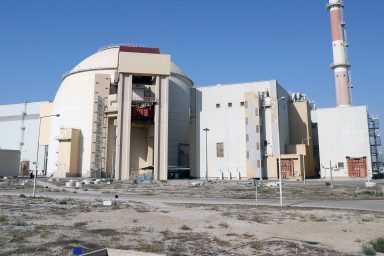Exactly 50 years to the day after the 1973 Yom Kippur War, Hamas reignites an all-out war with Israel.
|
Listen To This Story
|
Fighting in Israel lasted throughout Sunday. Hundreds of Hamas Palestinian fighters surged across Israel’s borders on Saturday, using waves of motorized hang gliders and hundreds of motorcycles, pickup trucks, and automobiles to crash across the border in simultaneous attacks against at least 29 locations. Hamas used drones to knock out Israeli observation posts and then crashed through defensive barriers. The massive surprise attack recalled the Yom Kippur War which began without warning on October 6, 1973, exactly 50 years ago to the day.
At the same time as Hamas fighters were crashing into Israel, an estimated 3,500 missiles were fired against the length of Israel’s territory in just a few hours. Kibbutzim and isolated villages reported that they had to wait for 12 hours or more before Israel’s Defense Force (IDF) troops could reach them and provide relief.
The Hamas fighters worked in well-coordinated rifle teams, catching Israeli men, women, and children in a murderous crossfire. The only possibility of survival for many Israelis was to hide in place and hope that the Hamas attackers passed them by. The Hamas fighters took more than 100 hostages, including Israeli soldiers, officers, and a number of ordinary civilians. A video taken by a bystander shows an Israeli woman in her 20s, her hands tied behind her back, being dragged out of the back of a jeep and shoved into a waiting car by armed militants. More than 250 bodies were reportedly moved from a music festival.
The hostages were moved towards Gaza to act as human shields against Israeli retaliation. Hamas indicated that it might try to use the hostages in exchange for members of Hamas being held in Israeli prisons. By the end of Sunday, at least 700 Israelis had been reported killed, and several hundred Hamas militiamen also lay dead. Hamas fighters showed no hesitation in shooting women and children. Israel responded immediately by bombing apartment blocks in Gaza. Israel advised civilians to leave, but as one commentator pointed out, “Where was there to go?”
The devastating attack raised two critical questions. The first was: How had Israel been caught totally by surprise? Neither Israel’s internal intelligence service, Shin Bet, nor the Mossad, Israel’s equivalent of the CIA, had any indication that the Hamas attack was being prepared. The Wall Street Journal reported that Israeli intelligence, in fact, had recently concluded that Hamas had given up on attacking Israel directly and was concentrating on causing disruption in the occupied territories of the West Bank.
The second major question was: What was Hamas really after? Hamas had to know that the attack would result in renewed Israeli bombing in Gaza and that civilians would pay the price, so what could really be gained from the attack? More to the point, was anyone else involved?
The simplest explanation seems to be that Hamas knew that Netanyahu would respond aggressively to the attack by bombing Gaza and in doing so create an untenable situation that could eventually bring down the current government. Netanyahu has already hinted that he plans fierce reprisals to eliminate Hamas from Gaza altogether, but that would draw Israeli troops into urban guerrilla warfare with heavy Israeli casualties.
US President Joe Biden, aware that Hamas might also expect to receive outside help, immediately denounced Hamas and then cautioned against any other hostile power trying to take advantage of the situation. At the same time, the US moved an aircraft carrier strike group, headed by the USS Gerald Ford, into the Eastern Mediterranean. Iran expressed support for Hamas.
Israel had been inching closer to an arrangement with Saudi Arabia that could have opened the way for recognition or at least relations with other Arab countries. The Hamas attack, and more to the point, Israeli Prime Minister Benjamin Netanyahu’s expected retaliation against the 2 million Palestinians in Gaza, is likely to put an end to that.
One of the surprises in the attack was that the Hamas fighters, who normally resemble disorganized street fighters, suddenly showed military discipline and an unexpected, sophisticated knowledge of small unit tactics. That suggests that Hamas may have been getting outside help in training its military units. If that is the case, Iran is likely to be a prime suspect. Iranians have long had a bone to pick with Israel over what they consider to have been the Mossad’s role in helping the Shah in the lead-up to the Iranian Revolution. Israel has also played a more active role than anyone else in trying to keep the Iranians from developing a nuclear weapon. The Mossad is believed to have assassinated Mohsen Fakhrizadeh, the Iranian scientist leading Iran’s nuclear program.
Iran also holds a number of grievances against Saudi Arabia. Iranian theocrats have never accepted the fact that Saudi Arabia’s king has been able to control access to Mecca and Medina, Islam’s two holiest cities. Iran practices Shiite Islam, while Saudi Arabia follows the Salafi version of Sunni Islam, and roughly 40 percent of Saudi Arabia belongs to the Wahhabi sect, which practices an extreme, puritanical interpretation of Islam. Iran has argued that control over Mecca and Medina should be entrusted to an interdenominational Islamic authority rather than be left to the royal family. Not surprisingly, the Saudis have refused.
A more serious complaint is that the Iranians believe that the Saudi royal family has received unconditional support from the West since it readily guarantees European and American access to Arabian oil. The Iranian argument is that the wealth provided by Saudi oil should be shared by the entire region, not just one family.
Whatever the reason, Iranians openly support both Hamas and Hezbollah. Whether they actually had any involvement in the current attack will need to be determined. It’s a reasonably safe bet that both Israeli and Western intelligence agencies are looking into it.
As far as Israel is concerned, the attack highlights the divisions that have resulted from Netanyahu’s alliance with right-wing extremists and his efforts to give himself the power to overrule Israel’s Supreme Court.
Netanyahu’s unpopular and controversial moves have divided Israeli society and led to nine months of massive demonstrations. Many new recruits to Israel’s defense force have threatened to skip training sessions and questioned whether they would fight to defend a Netanyahu dictatorship. For the moment that talk has stopped and Israel’s opposition has volunteered to throw its weight behind a unity government.
Netanyahu’s policies, however, make it hard to see how Israel can move toward any lasting peace. Netanyahu was only able to form a coalition government by allying himself with hard-liners in the Knesset, the Israeli parliament, who have shown no hesitation at inflaming Arab sentiments. Israel’s population of a little more than 9 million people, consists of slightly more than 7 million Jews and nearly 2 million Arabs. Unless Jews and Arabs can learn to live together peacefully, Israel will ultimately have to choose between being a Jewish state or a democracy.
Netanyahu now faces a lose-lose proposition: If he seeks revenge against Hamas and turns Gaza into collateral damage, Israel will find itself involved once again in brutal warfare that no one wants. If Netanyahu does nothing, the slender coalition he depends on to govern will evaporate. US Army doctrine used to maintain that no terrorist action is ever likely to produce a military victory by itself. The objective of terrorism is to get the target to destroy itself by overreacting to the provocation.
In a sense, Hamas has set a fire that promises to become a conflagration. Who will put it out is anyone’s guess.




